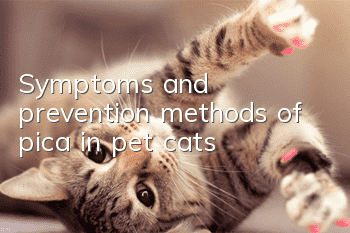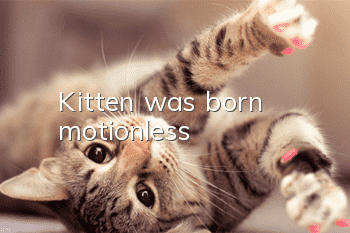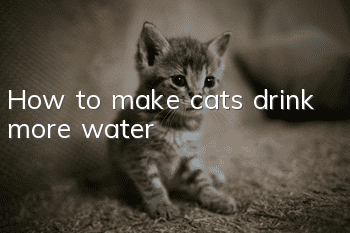Symptoms and prevention methods of pica in pet cats

Pica is a pathological manifestation of pet cats swallowing or licking foreign objects other than food. Pathologically, it is also a common nutritional and metabolic disease. This abnormal and pathological behavior means that cats have a special hobby for certain things that should not be sucked, just like some people like to bite their nails or suck their fingers, and most of the cats' sucking objects are woolen fabrics. , textile, host or plant.
Cats with pica often manifest themselves in swallowing wood chips, stones, rags, sand, fur, grass, feces and other foreign objects. Depending on the characteristics of the foreign objects swallowed, whether they are retained in the digestive tract, and whether they are retained in the digestive tract, there will be sharp edges at the retained parts. Foreign bodies damage the oral cavity and can cause salivation and oral bleeding; in some cases, foreign bodies can cause obstruction or perforation in the esophagus, stomach, and intestines.
It is not uncommon for animals to lick their fur and form hairballs in their stomachs. When there are foreign bodies in the digestive tract, cats often have symptoms such as anorexia, hunger strike, and vomiting. Then we must take certain precautions against this.
Treatment methods:
Most of the sucking behavior occurs in cats that are highly dependent. They retain the dependence of their childhood (normal cats are quite independent), so psychological treatment for this kind of over-dependence will be helpful. In order to improve the abnormal sucking behavior, the cat should increase the excitement of games, increase activities at home, and give some new things to stimulate its curiosity. If possible, let it have more contact with the outside world and take it out for more walks.
Of course, the most important thing is to strengthen feeding and management, adjust the nutritional structure of food, and supplement trace elements and multivitamins in an appropriate amount. For example, it is ideal to add multivitamin tablets to the cat’s food (21 Jinvita), Calcium tablets, cod liver oil, etc. Regular deworming is also required. Adding cellulose substances to food, such as rice bran and toilet paper, can also improve the habit of eating plants. Regarding the behavior of cats sucking textiles, you can spray some strong-smelling barrier agents on these textiles, such as eucalyptus oil, peppermint oil, etc. You can also place some mechanisms under the clothes to deter cats from approaching.
The principle of prevention and treatment is to take laxatives or deep enema to eliminate foreign bodies in the digestive tract. Pets with gastrointestinal diseases should be treated with primary diseases caused by intestinal parasites. It is best to use levamisole hydrochloride, 10 mg per kilogram of body weight, orally, or ivermectin, 0.2 mg per kilogram of body weight, intramuscular injection. Repeat the medication once after 1 week.
If a pet cat exhibits heterophilic behavior, it should be stopped immediately:
1. Whenever a cat has pica, spray it with water from a water gun immediately. Repeat this to gradually eliminate pica. (Just scare them off, don’t spray water maliciously)
2. For fixed items such as wires and wood, you can apply odorants that cats are sensitive to (such as deodorant, perfume, etc.) on them.The cat will not go near it because it hates the smell.
When a cat behaves abnormally, we should first find the cause within ourselves and patiently solve the problem. Cats who are sensitive by nature should not be beaten, scolded or punished. This is often counterproductive and may even lead to more serious psychological disorders.
- Which ointment is better for treating ringworm in cats?
- How to make a cat more obedient? Let it remember its name!
- What are the benefits of cats basking in the sun? Things to note when cats are basking in the sun
- Is it true that a cat can be trapped by drawing a circle on the ground?
- Pet owners should remember the symptoms and treatment of postpartum calcium deficiency in cats!
- Do you know the symptoms of cat rabies? How to treat cat rabies!
- How to keep a cat from destroying everything in the house and tame a well-disciplined cat?
- Why is the cat coughing and retching?
- How to rub a cat's belly to help defecate?
- What's going on with the rotten hole in the cat's belly?



